On 24 April in Helsinki, the Finnish electrotechnical trade association STK hosted the 2024 edition of the “Well-being with electricity” vision seminar, in partnership with the Finnish association of electrical contractors STUL, among other partners. The speakers of the seminar challenged the audience to think about how to get more experts, new know-how and cooperation in the field.
The age groups are getting smaller, experts are retiring and at the same time the energy revolution and new technologies require new learning. In order to improve the attractiveness of the industry, new ways have to be found, and companies need to be involved, for example to offer internships and thesis jobs to young people.
Sallamaari Muhonen from Finnish Electrotechnical Trade Association highlighted these issues at Heureka, Vantaa on April 24 in her opening remarks of the seminar.
There are no quick solutions to the skills shortage
Julie Beaufils, Secretary General at EuropeOn, emphasized the importance of workforce and know-how in realizing the energy transition in Europe.
Beaufils also highlighted the complex and interconnected technologies needed in the energy transition, which require new, constantly updated know-how.
There are already challenges in the availability of labor throughout Europe, which are further deepened by the aging of the population. The attractiveness of the field and technical education and its difficulty to improve gender parity complicate the situation. The technological challenge mentioned above also affects the availability of labor.
Beaufils warned against temporary solutions such as re-skilling and up-skilling, as addressing shortages will mostly rely on scaling up the number of students undergoing a full technical education. Short training is bad medicine in the electrical industry, especially with regards to the electrical safety risk. She sees the situation as positive in the fact that when the challenges are Europe-wide, we have the opportunity to cooperate for solutions. EuropeOn invests in influencing the political decision-makers of the EU, and Beaufils reminded us of the upcoming European elections. Up to 80% of legislation related to energy and climate comes from the EU, so it is important for companies to be part of the conversation.
Finland’s energy future
Finnish Energy’s Joona Turtiainen shed light on the vision of the energy future in his presentation. The energy crisis has been passed and Finland currently has the second cheapest electricity in Europe. It has been possible to replace fossil fuels and net imports with renewable forms of energy and nuclear power. Carbon dioxide emissions from electricity production have collapsed. However, the electrification of industry slowed down.
Finnish Energy is aiming for strong growth of energy-intensive investments in Finland. Although not everything can be directly electrified and hydrogen is needed to help, the hydrogen economy also requires more electricity to be realized.
According to Turtiainen, the highway has been built and now we are waiting for the industrial carts to start rolling onto it.
What do energy efficiency and metaverse have in common?
Nokia’s Jarkko Pellikka spoke about creating an energy-efficient metaverse through ecosystem cooperation and standardization. Digitization and the green transition form a double transition that requires new skills and combining skills.
Energy efficiency is an important part of the discussion about digitization because the amount of data is constantly increasing and electricity is needed to move the bits. Digitalization also reduces carbon dioxide emissions.
According to Pellikka, metaverses are already here and there are many examples of practical applications, such as the familiar Teams meetings, remote monitoring and remote maintenance in industry or digital twins in product development. When expertise can be made available from the other side of the world in an instant, or testing and validation can be done before the features are exported as part of a physical product, a huge competitive advantage is created.
Pellikka makes standardization a part of the whole in such a way that it enables the interoperability of digital solutions. Standardization can ensure that development moves in the same direction and it is easy to combine know-how.
Author: Taija Merisalo
Photographer: Maria Heinola
